Cairo,
the capital of Ard Al-Kinanah Egypt
Introduction
Cairo has been known by many nicknames
“Qahirat El-Moez,” “Al-Madina Al-Mahrousa,” “Crown of the Wild,” “The City
of all Cities, “and “The City of a Thousand Minarets.” All these names are
given by historians to the ancient city of Cairo, whose history dates back to
the dawn of human civilization.
Since the Pharaonic era, Cairo was
the capital of Egypt under the name “Iunu City,” and it symbolized the unity of
Northern and Southern Egypt. So, let’s find out more about the history of that
fascinating city.
Cairo, the capital of
Egypt and one of Africa’s largest cities, has always been famous for its
heritage and cultural diversity. It is also one of the world’s most important
political and religious centres, given its strategic location on the western
bank of the Nile River. It is bounded on the north by Qalyubia city, on the
east and south by the Zahir El-Sahrawi Villages, and on the west by the Nile
River and Giza city.
Cairo is currently home to many government buildings and headquarters,
such as the presidential palace, Egypt’s Cabinet and ministries, the House of
Representatives, and the Central Bank. However, all these buildings will soon be
relocated to the New Administrative Capital.
Moreover, it is considered a prefecture-level
city. It is simultaneously a city and a province in its own right. Although
Cairo is Egypt’s largest city, it is the smallest Egyptian province.
Cairo houses numerous
monuments dating back to different eras, including Pharaonic, Greek, Roman,
Coptic, and Islamic. There is no other place in the world that
houses so many Islamic, modern, and military monuments, so it is no wonder that
Cairo, as described by the famous Philosopher ibn Khaldun “wider than anyone
has ever imagined.”
Greater
Cairo
In
modern times, Cairo has expanded to be what is called “Greater Cairo,” a
semi-official administrative entity including Giza province and some of its
suburbs as well as Shubra El-Kheima of Qalyubia province.
Cairo’s
Administrative Division
Cairo City consists of 4 areas divided into 38 districts:
*The north area divided into 8
Districts
*The east area divided into 9
Districts
*The west area divided into 9
Districts
*The south area divided into 12
Districts
Cairo has three new cities: New Cairo, El-Shorouq, and Badr City
Cairo’s Population and Land
area
Cairo
has an estimated population of more than 10 million in 2022. Cairo’s total space
is 3084.676 km2, and the inhabited area is 188.982 km2
Cairo
celebrates its National Day on July 6th, the day on which General
Jawhar al-Siqilli laid the foundation stone of Cairo in 969 AD.
Cairo Logo
The official logo of Cairo is Al-Azhar Mosque, Islam's minaret and platform in the Islamic world.
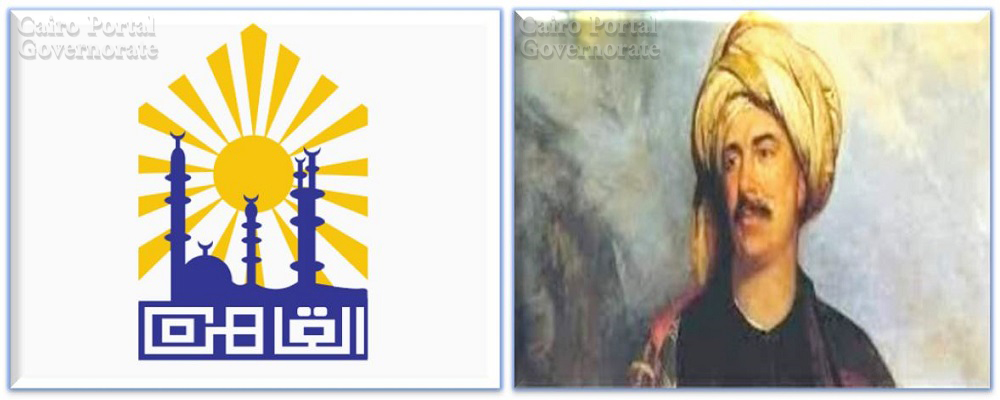
Cairo Governorate Headquarters
The
building of the Cairo governorate headquarters was part of the Abdeen Palace,
one of Cairo’s most famous presidential palaces built during the era of the
Mohammad Ali Pasha dynasty.
In
1863 after ascending the throne, Khedive Ismail ordered the construction of the
Abdeen Palace to transfer the official residence of the governor from the Salah
El-Din Citadel, which remained the official residence since Salah El-Din
established it in 1171, to the centre of the city.
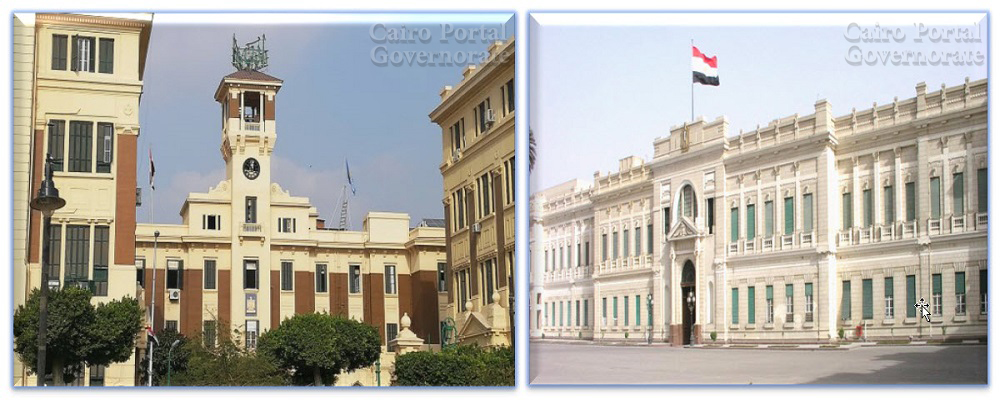
It
took ten years to build the palace, and it was named after Abdeen Bey, one of
the military commanders of Mohammad Ali Pasha. Abdeen Bey owned a small mansion
in the current place of Abdeen palace. Later, Khedive Ismail demolished the
mansion and expanded its area to 24 acres after buying it from the widow of
Abdeen Bey.
The
palace was built by the French Engineer De Corel wel Rousseou along with
several Egyptian, Italian, French, and Turkish workers and technicians. The
palace’s construction cost 10 thousand pounds, while the furniture cost 2
million.
Abdeen Palace remained
the official royal residence and a symbol of power from 1873 to
1952. It also witnessed many important historical events in Egypt’s
modern history, such as the Orabi Revolution and the Egyptian army
demonstration at Abdeen Square in front of the Abdeen Palace in 1881.
The Abdeen Square was built on top of El-Faraeen
stagnant pond on a 9-acre area and beside the square was the barracks, which is
currently the Cairo governorate headquarters.
Cairo Origins
Since its foundation
thousand years ago, Cairo has been the main center of Arab-Islamic
civilization. It is one of the Islamic world's unique cities known for its
historical position and variety of monuments.
Cairo was home to most capitals of Egypt over
the ages. Each one was the capital of a different era, such as the Iunu city
“Heliopolis” in the Mataria neighborhood and the Islamic capitals of Egypt: The Fustat city, the
Qata’i city, the Asker city, the Fatimid Cairo, and the Khedivial Cairo.
The Fustat City
It was founded by Amr
ibn Al-Aas in 21 AH – 641 AD. It is also where Amr ibn Al-Aas built the first
Mosque in Egypt and Africa, Amr ibn Al-Aas Mosque, following the
Islamic traditions of establishing Islamic capitals.
The word Fustat means a tent, which is derived
from the Greek word fossaton, meaning a ditch. The Fustat city continued to be
a center of movement and urbanization during the Rashidun Caliphs' eras and the
Umayyad era.
The Asker City
It was the second
Islamic capital of Egypt. It was built during the Abbasid period in 331 AH- 571
AD. Al-Askar is an Arabic word that means the soldiers. This city was
established in the north of Al Fustat city.
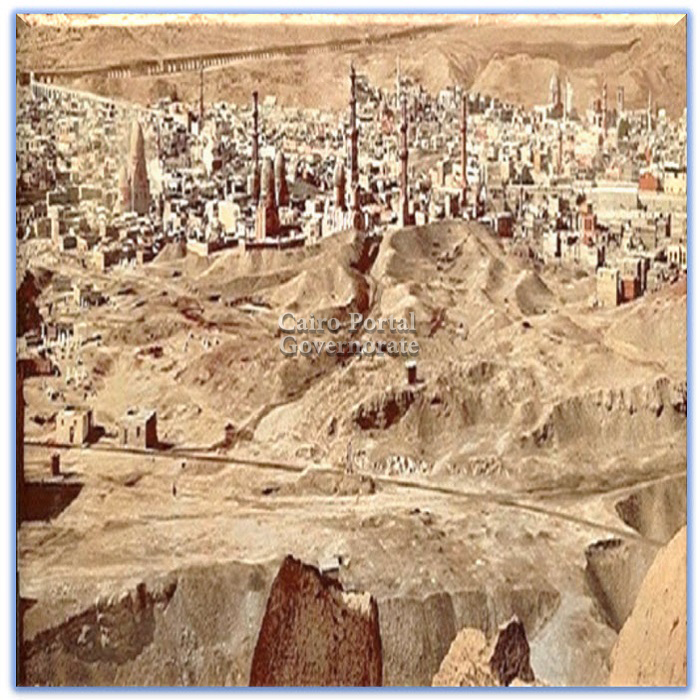
The Qata’i City
It was the third Islamic
capital of Egypt, built by Ahmad ibn Tulun in 256 AH- 870 AD on high ground
between Yashkur Mountain and Al-Mokattam Mountain Northeast of Askar city.
The Qata’i city was the first capital to follow artistic rules of
city construction, similar to the Iraqi city of Samarra.
Ibn Tulun allocated a
fief for each group of his army. He also built the famous Ibn
Tulun Mosque, one of Cairo’s oldest mosques, for his soldiers, servants, and
several ethnic groups such as Sudanese, Nubian, Greek, and Roman. Both cities of the Asker
and the Qata’i were built during the Abbasid
era.
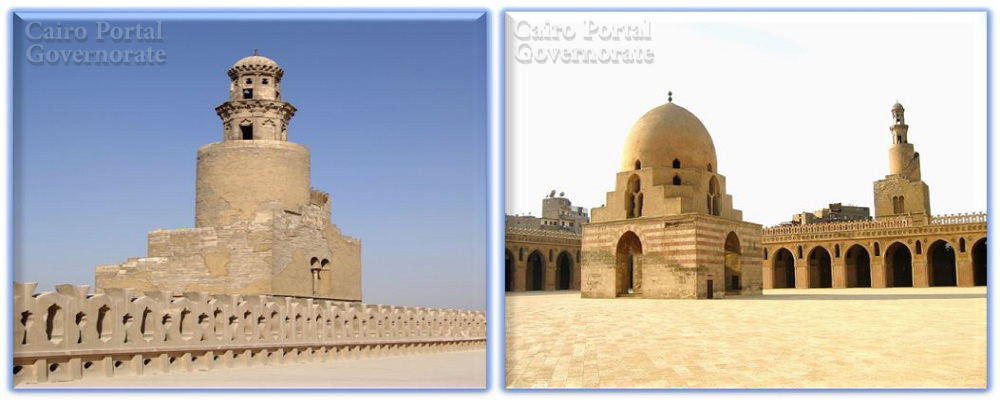
Fatimid
Cairo
By the foundation of
Qahirat Al-Moez, a new chapter began in the history of Egypt’s capitals, one
that never stopped developing.
“After the army of Alexander the Great, there
were no bigger armies than Al-Moez. The Fatimid conquest of Egypt was not only
replacing one city with another, but a huge leap in religious, cultural, social
terms,” the Egyptian Historian Al-Maqrizi said.
The Leader Jawhar Al-Siqilli began to build the
new city of the Fatimid State in 969 AD after he took orders from the Fatimid
Caliph Al-Moez Le din Allah to build a political capital and named it Cairo. He
fortified the city with eight gates, but only three remained (Bab El-Nasr- Bab
Al-Futuh- Bab Zewila).
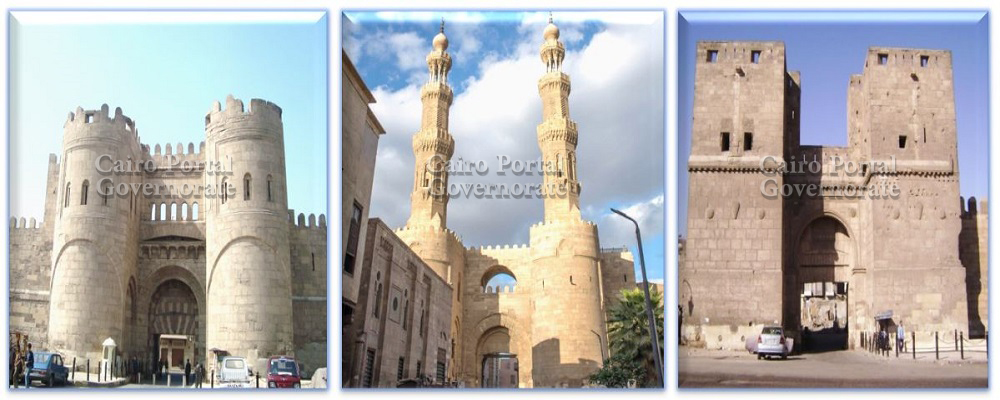
Cairo, the Ayyubid Era
When the Ayyubids ruled
Egypt and the seat of power transferred from Cairo to Salah EL-Din Citadel,
Salah El-Din’s most significant defense project was to protect Cairo, the
Fustat, and the area between them. So, he planned to surround those areas with
one wall.
He assigned Bahaa El-Din Qaraqosh to build the
citadel (Qalaet Al-Gabal). Therefore, he began to construct the wall and dug a
trench around it. He also restored Cairo’s Fatimid wall. Salah El-Din had two purposes. The first is to fortify the capital
against the crusader attacks, and the second is to protect the
sultan.
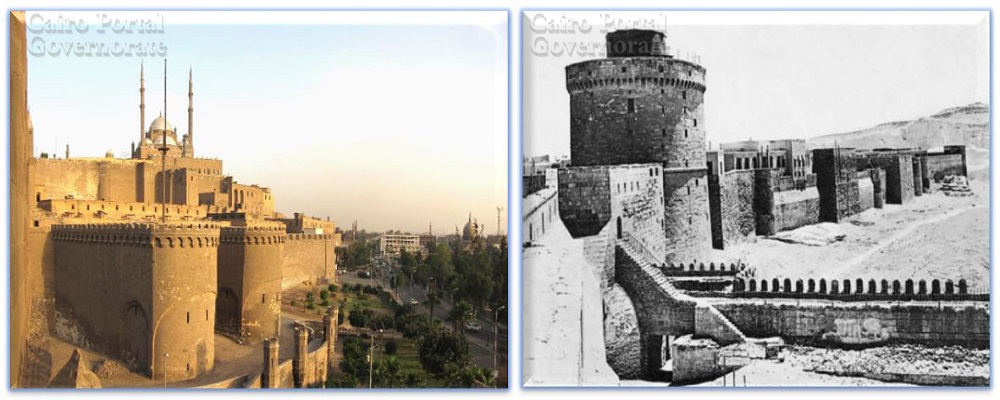
Unfortunately, the project did not come out as Salah El-Din
wanted, and he died before completing it. El-Malek El-Kamel was the first to
move from Cairo to the Citadel in 604 AH/ 1207 AD.
After the seat of power transferred to the citadel, Cairo opened
its door to elements who were banned from entering the city during the Fatimid
era.
Moreover, commercial and crafts activities began to seep into the
city and spread around Cairo’s most vibrant and fascinating street, El-Moez
Street. These economic and social changes led to the reshaping of the city’s
urban fabric and the emergence of new patterns of buildings that replaced most
of the Fatimid palaces in the Ben El-Qasreen neighborhood, such as the Dome of
El-Saleh Negm El-Din Ayoub in 648 AH/ 1250
AD.
The Ayyubid era was characterized by military
architecture represented in citadels, fortifications, and walls to fortify the
city against crusader attacks, and Islamic architecture as the Ayyubids
introduced a new kind of educational institution; madrasas. They built them to
teach the Sunni Creeds and confront the Shiite Creeds, such as Al-Madrasah
Al-Kamilia, built by Sultan El-Malek El-Kamel Mohammad in Cairo in 622 AH/ 1225
AD.
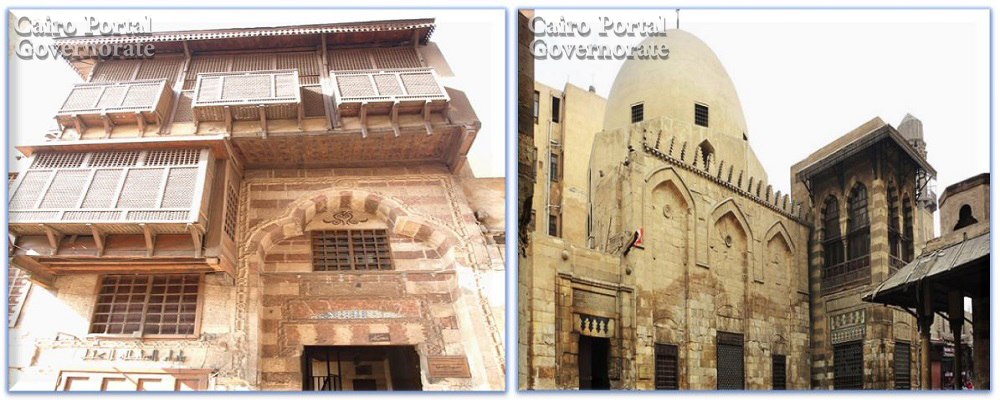
Cairo, The Mamluk Era
The
Mamluk ruled Egypt in 648 AH/ 1250 AD, and the Salah El-Din Citadel (Qalaet
Al-Gabal) remained the seat of power as an actual fortified city inside its
walls and towers. The citadel was the most important inheritance of the
Ayyubids.
During the Mamluk era, Cairo
witnessed unprecedented expansion that had not happened in the history of
Islamic Cairo. This expansion was attributed to Sultan El-Naser Mohammad ibn
Qalawun during his reign (709 -741 AH/ 1309-1341 AD), which was a turning point
in the history of Cairo.
Cairo expanded to include the surroundings of
the Fatimid remnants, El-Husseinia Alley, Bab Al-Futuh, passing through the
Ridaniya area
(Now Abbasia Neighbourhood), Taht El-Rabae Street, Darb Al-Ahmar Street,
Qanater El-Sebae (Now Al-Sayeda Zeinab Neighbourhood), as well as emerging
neighbourhoods in the West mainland of the gulf to Meniat El-Serg (Now Shubra
Neighbourhood), and Bab El-Louq neighbourhood.
Sultan El-Naser ibn Qalawun also completed the
Magra El-Oyoun Fence construction and built the waterwheels that raised water
to the fence to reach the Salah El-Din
Citadel.
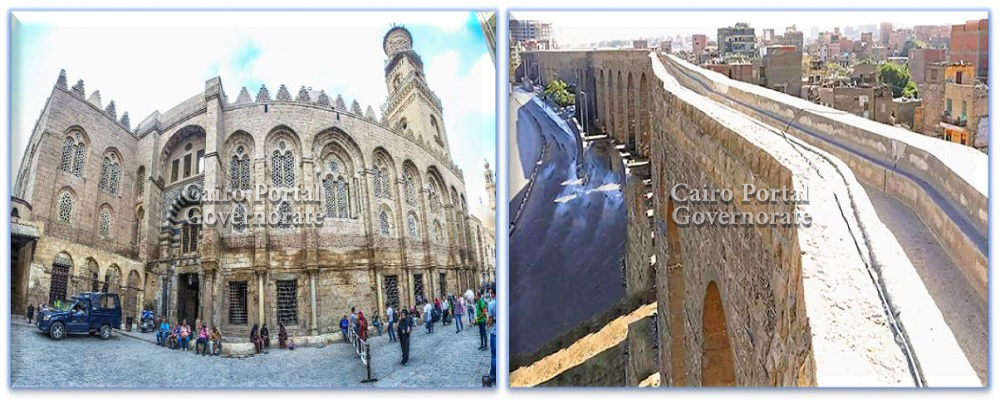
The Mamluks built many mosques, palaces, and
houses in that area by order of Sultan Qalawun, such as Qawson Mosque on
Al-Qalaa Street (730 AH/1330 AD), Beshtak Mosque on Darb El-Gamamiz Street 736
AH/ 1336 AD), Al-Tinbugha Al-Maridani Mosque on Tabanna Street (739 AH/ 1340
AD), and the jewel of the Islamic Architecture Sultan Hassan Mosque and
Madrassa (757-764 AH/ 1356-1363 AD).
Despite the damage that Cairo suffered from because of famine and
deterioration of economic conditions during the Mamluk era, Sultan Al-Ashraf
Qaitbay (873-901 AH/ 1467-1496 AD) and Sultan Al-Ashraf Qanswa Al-Ghory worked
on the reconstruction of Cairo, including the renovation of Salah El-Din
Citadel buildings.
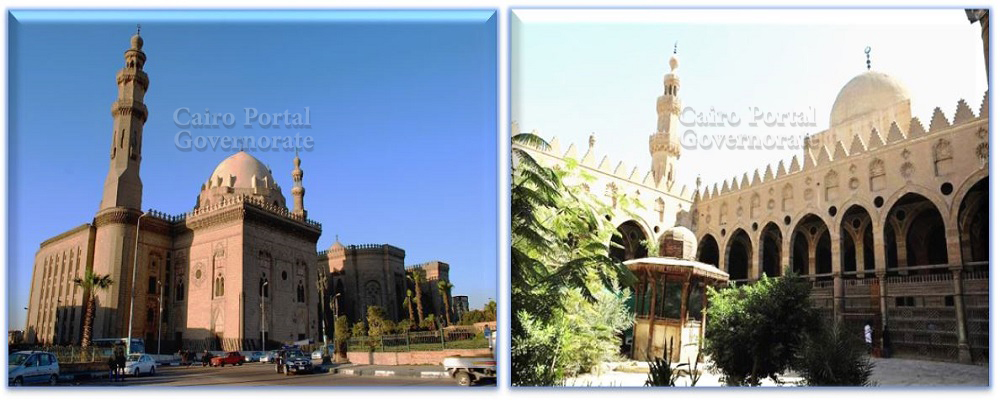
During the Mamluk reign, Cairo was no longer a fortified city and
merged with the Mamluk districts. Moreover, El-Moez Street became not only a
trade artery but also a venue for the royal procession and a spiritual and
political center. It was also home to many Mamluk madrasas like Al-Madrasa
Al-Salehia, Madrasa of El-Zaher Baybars, and Al-Ghory
Complex.
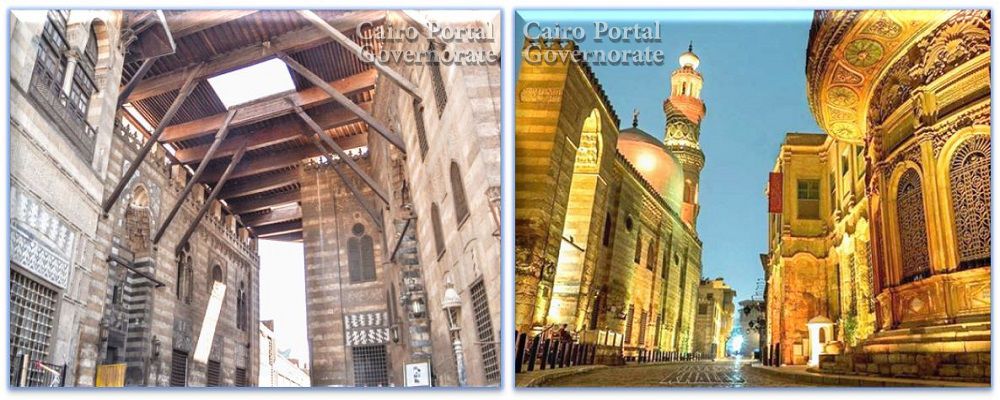
Cairo, the Ottoman Era
After the fall of the
Mamluk Sultanate in Egypt and Syria in 923 AH- 1517 AD and the
rise of the Ottomans, although Cairo lost its position as the capital of the
Mamluk state, it had a special status during the Ottoman era as it was the
second city after Istanbul.
Cairo also maintained
its position since the Fatimid era as a trade hub, and it was also the place
that sent Kiswat Al-Kabaa (the cover of the Kabaa) to Mecca in Saudi Arabia in
a huge ceremony, which contributed to the development of the commercial centres
around the heart of Fatimid Cairo.
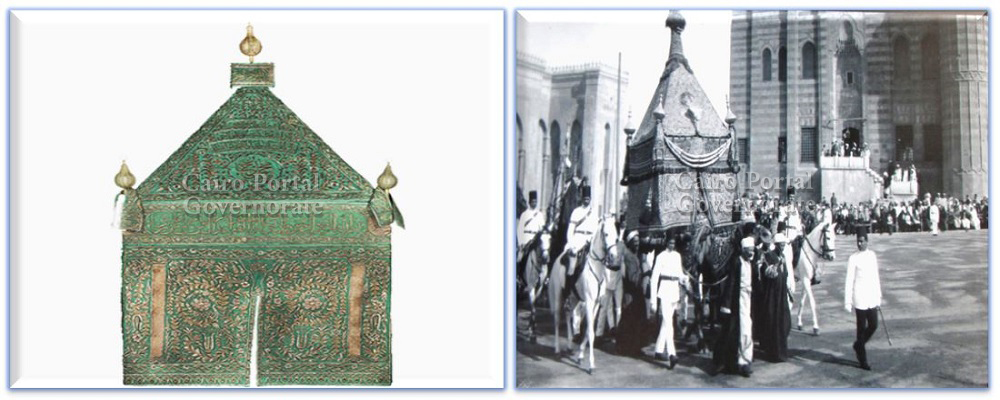
Cairo continued to be a center of cultural and
religious center thanks to the Al-Azhar Mosque, which served as a major Islamic
university in many places during the Ottoman era.
During the Ottoman era, Cairo expanded more, and
urbanization spread through the city. The Aristocratic class of pashas,
noblemen, and princes lived in it.
The Ottomans left many landmarks, including
sabils, palaces, mosques, madrasas, hammams, gardens, and ponds like the Sabil
of Khesro Pasha, the Sabil of Abdel Rahman katkhuda, the Mosque of Mohammad Bey
Abu Al-Dahb, and El- Suhaymi House.
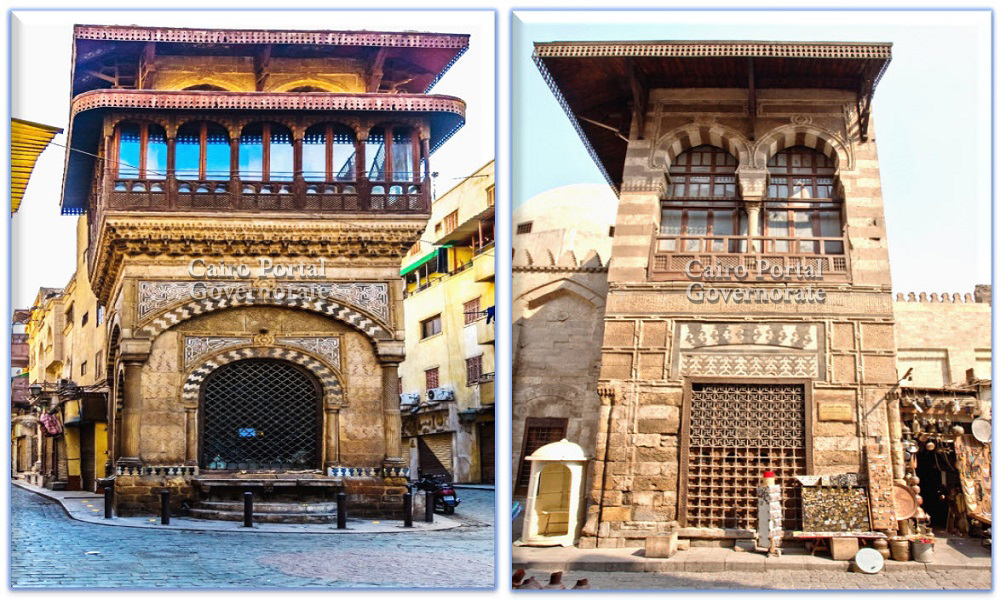
Cairo during Mohammad Ali Era
When Mohammad Ali Pasha
ascended the throne of Egypt in 1805, it was a turning point not only in
Egyptian history but also in Cairo’s history. He gave orders to clean and sweep
streets, which reflected in public health. So, diseases and pandemics became
less spreading.
He also demolished old buildings and rebuilt
them, in addition to reconstructing wastelands across Cairo like the current
Garden City area.
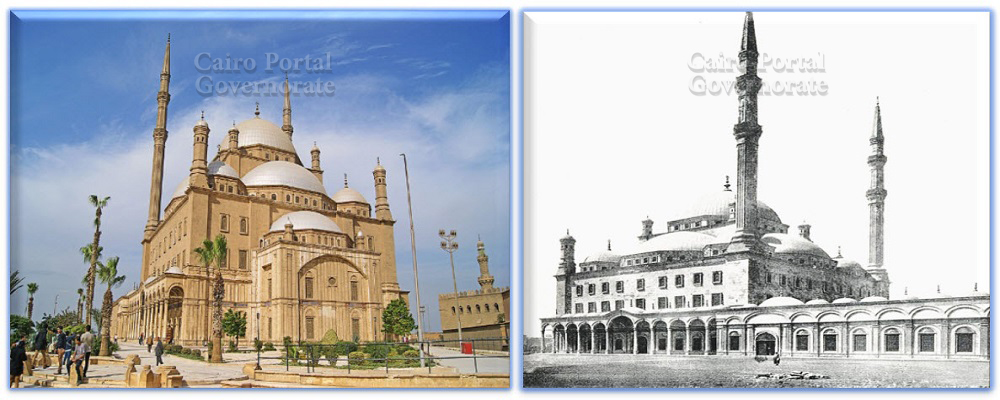
Furthermore, Mohammad Ali renovated the Salah
El-Din Citadel’s gates and built inside the citadel the Jawhara Palace and the
Mohammad Ali Mosque. The mosque was built in the Ottoman architectural style
and later became one of Cairo’s fascinating landmarks.
Mohammad Ali Pasha’s era also witnessed a
flourish in education as he built the school of medicine and other schools.
As for trade and industry, the Boulaq area
became a trade and industrial center embracing workers and artisans.
That in addition to making more expansions and constructing new roads inside
and outside the city.
Khedive Ismail Era
During that era, Cairo
witnessed unprecedented development and quantum leap. Its space has doubled and
included more neighborhoods with new characteristics.
Since khedive Ismail ascended the throne of Egypt, he decided to
prove to the world that his country was not only part of Africa but Europe as
well. So, he built the Ismailia district (now Abdeen neighborhood, Downtown)
and Al-Faggala
district in the European style.
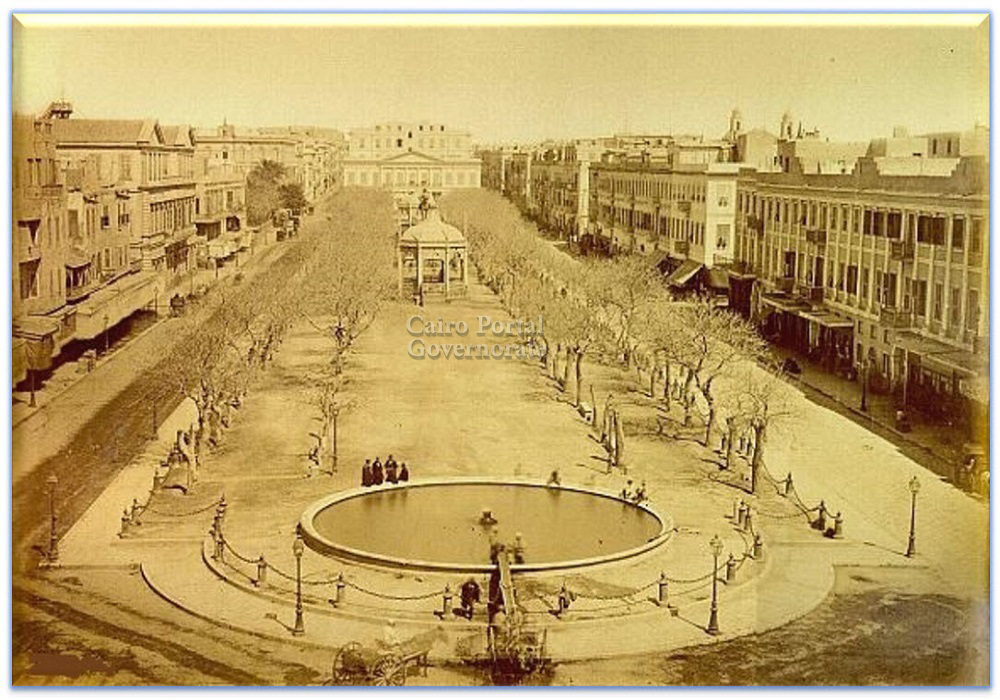
Khedive Ismail also
ordered the construction of the Abdeen Palace and made it the seat of
government in Egypt instead of the Salah El-Din Citadel until 1952 AD. He
developed Cairo to be similar to European cities, and it became the capital of
Egypt.
Khedive Ismail was the
one who laid the foundation of modern Egypt as he had an integrated vision to
turn Cairo from a medieval city into “Paris of the East.”
The
invention of modern transportation and the automobile in 1903 was the main
reason for the rapid change of the road network of Cairo’s new streets and
neighbourhoods, the increase of the cobblestone streets, and the growth of the
city’s suburbs.
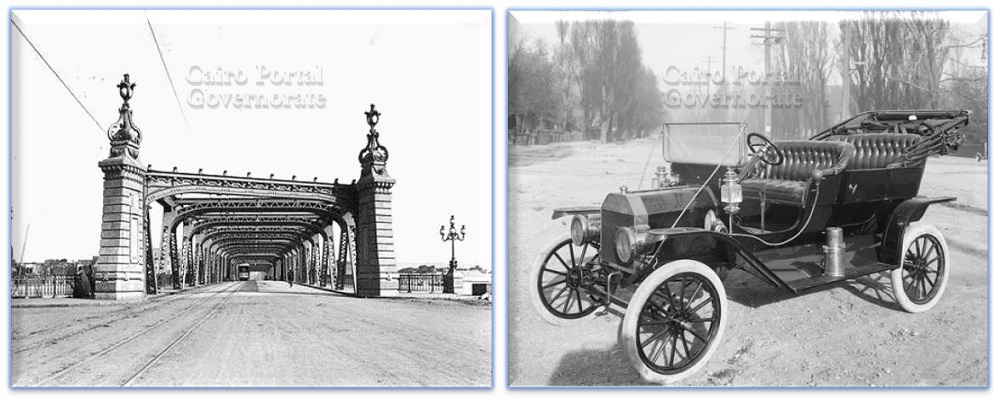
Modernization continued in Cairo, and new bridges were built over
the Nile River in the first decade of the 20th century, such as
the Boulaq Abu El-Ella Bridge (1908-1912 AD).
Additionally, new neighborhoods emerged as well as public
institutions with the beginning of the parliamentary life in Egypt in 1866 such
as the ministry of public works in 1880 and the ministry of endowments in
1899. In 1923 the first parliament building was established
after the adoption of Egypt’s first constitution.
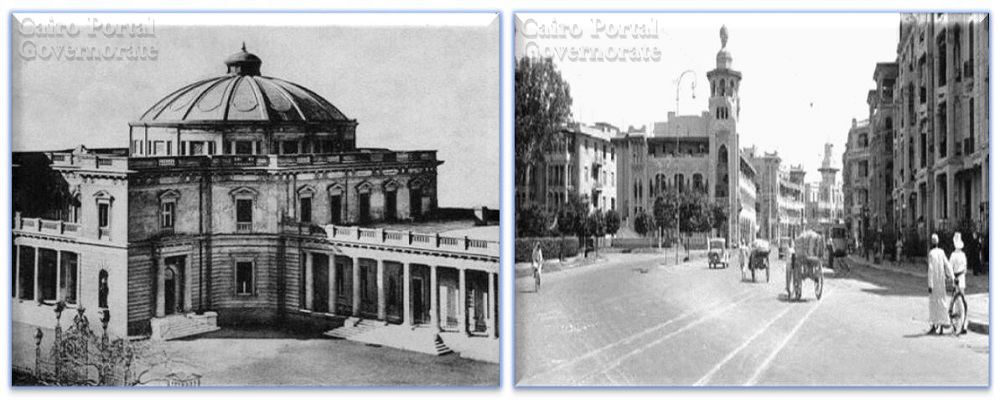
Contemporary
Cairo
After the Cairo fire on
26 January and the 23rd July Revolution in1952, Cairo began a
new phase of development and growth as new roads were established to widen
Cairo’s streets, such as the Salah Salem Road in 1985 as well as the Maspero
building and the Cairo Stadium. It also expanded to include new
neighbourhoods like Madinet Nasr and Alf Maskn.

Moreover, Cairo was the
first African city to install a metro system in 1987.
Thus, Cairo has remained
the capital of Egypt and the centre of power from the Fatimid era until the
present, and it continued to expand north and west year after year.
In each era, Cairo experienced periods of prosperity and
development socially and politically. It also went through periods of economic
slump and political instability, which naturally impacted the social and
cultural situation. But each time, Cairo overcame challenges and obstacles to
regain prosperity and stability to prove the world its greatness.
Cairo is currently implementing several
mega development projects which aim to eradicate informal settlements and
restore the capital’s aesthetic appearance such as The Fustat Development
Project.
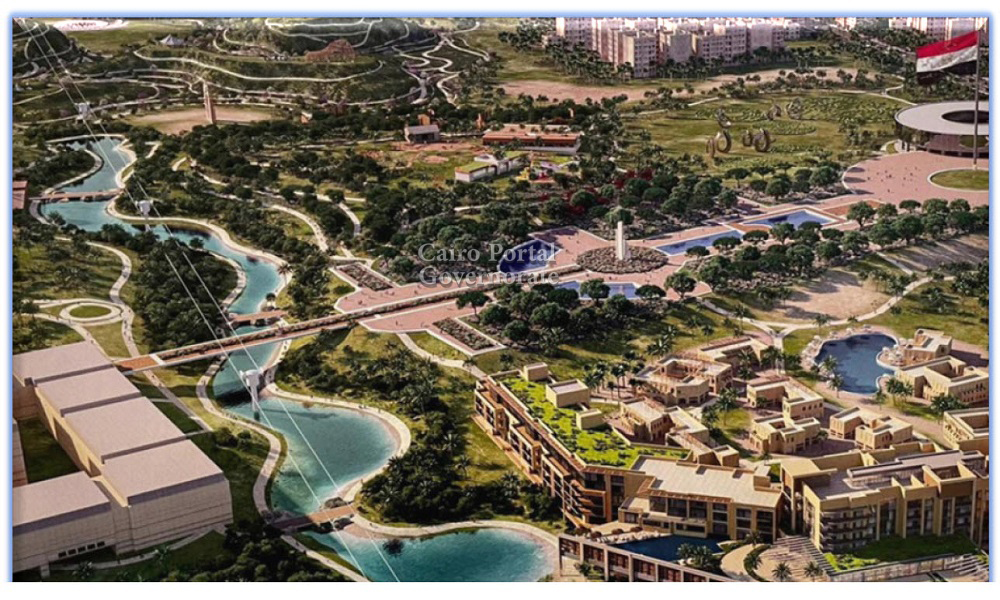
Furthermore, Cairo is witnessing several other important projects,
such as the Monorail project and the electric LRT train Project turning Cairo
into a leading political, cultural, and economic center in the Middle East and
Africa by creating a flourishing economic environment and achieving sustainable
development.
Last update: 2024


